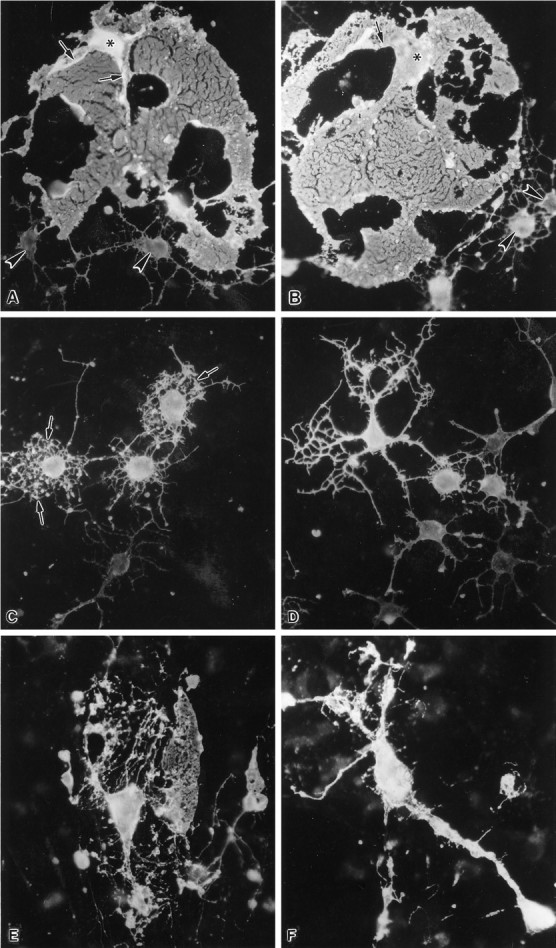Fig. 3.

The effects of 23-mer antisense to PLP on OL morphology in primary cultures. A, B, OLs in control and primary cultures, 14 DIV, stained with the OL-specific A007 antibody. The cell bodies (asterisks) of two mature OLs have large, elaborate membrane sheets that originate from cellular processes (arrows). Several immature OLs (arrowheads) that have thin, branching processes are also present in these pictures. C, D, OLs treated with 23-mer antisense, 2.5 μm for 7 d, beginning at 7 DIV and stained with the A007 antibody at 14 DIV.C, Three brightly fluorescent OLs and one lightly fluorescent OL have numerous short processes that form an interconnected lacy network. Numerous small globular structures (arrows) are located along or at the tips of these processes. D, Fluorescent intensity of OLs in these cultures ranges from dim to very bright. The brightly fluorescent cell has thick interconnecting processes. The pictures of the OLs shown in Figures 3A–D were prepared and cultured from the same mouse brains. E, F, Primary cultures treated with 23-mer antisense, 2.5 μm, beginning at 14 DIV and continuing for 7 d (21 DIV). The A007+ OLs illustrate the range of morphologies seen with antisense treatment.E, One OL retains a membrane sheet but has abnormally long, thin processes that end in globular structures. F, Another OL has stout and long processes that are very brightly fluorescent but show no membrane sheets. Magnification, 450×.
